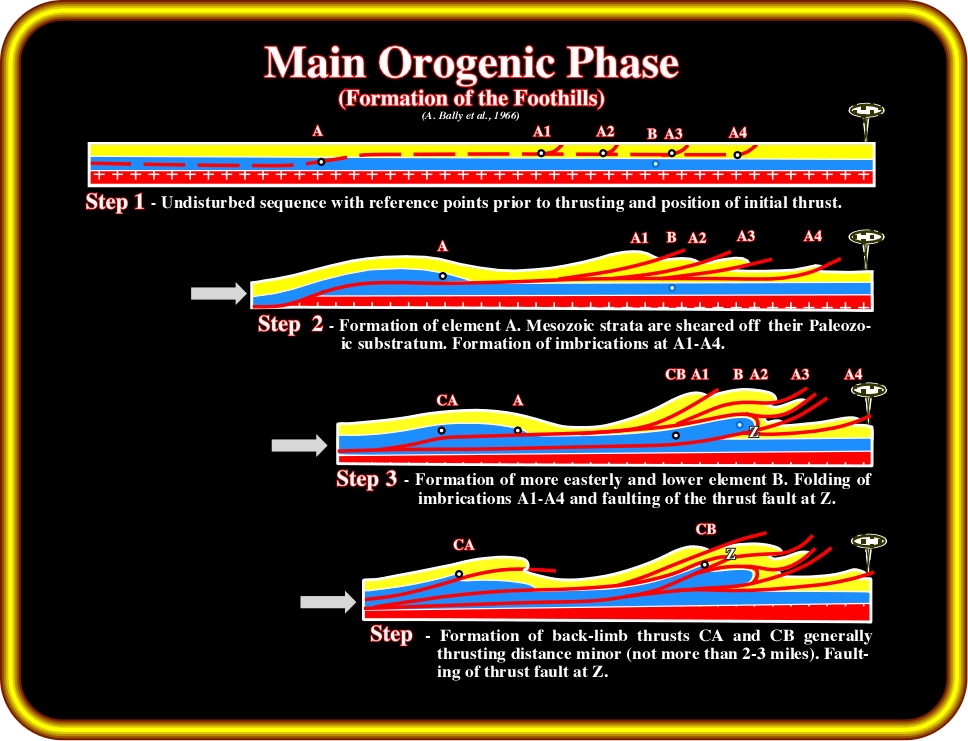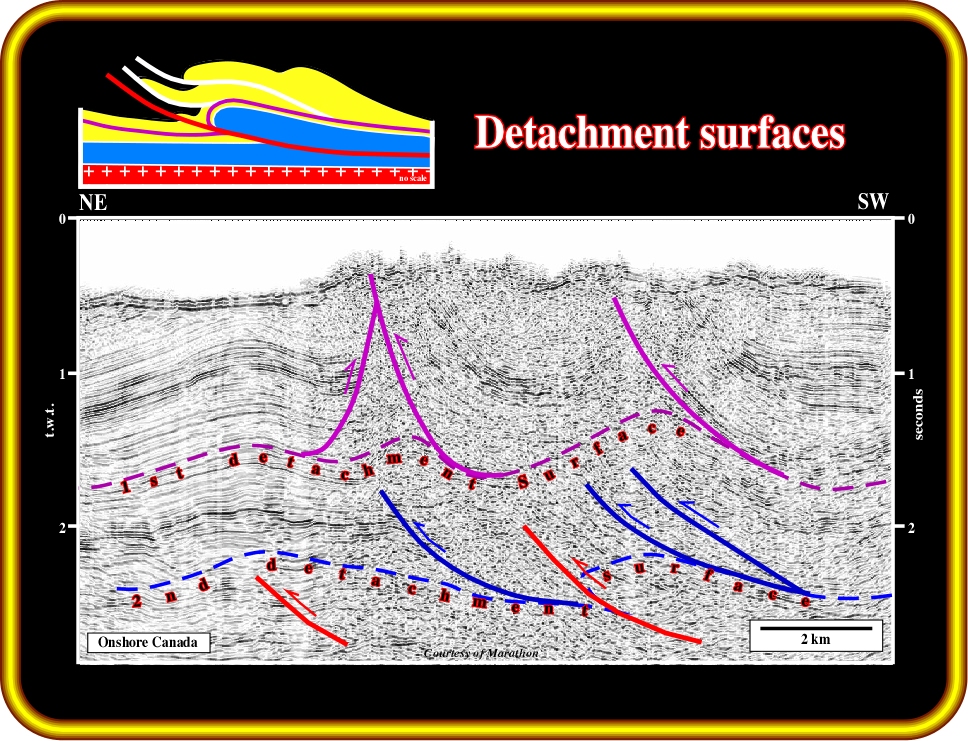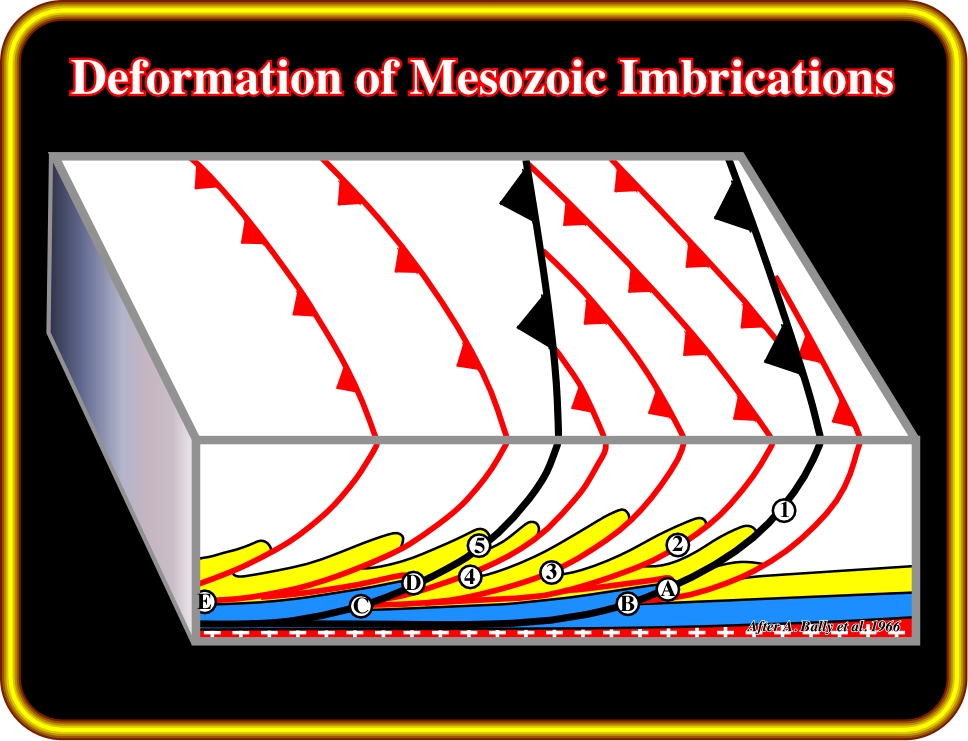
Universidade Fernando Pessoa
Porto, Portugal

Geological Setting & Seismic Interpretation

Plate 33- In spite of deformation proceed from west to east, concomitant with the formation and migration of the foredeep basin, geologists often consider four steps of deformation.

Plate 34 - The 1st detachment surface (purple) is deformed (folded) by younger thrusts associated with a new detachment surface (blue), which is also deformed by youngest thrusts (in red).
Main Orogenic Phases
A. Bally et al. (1966) suggested that during Mesozoic time, deformation proceeded from West to East, concomitantly with the formation and migration of the foredeep (it may then be contradictory to speak of any main deformation phase).
Shortening:
- Geological cross-sections show that about 37 km of shortening occurred in the foothills after the Paleocene.
- Such a shortening represents approximately 25% of the total shortening of the Rocky Mountains that occurred between the Paleocene and Late Eocene - Oligocene time.
- The remaining 75% all could have occurred during the same time, but Bally et al. (1966) assumed that it occurred during Mesozoic time.Formation of foothills:
The main orogenic phase is taken to mean the formation of the foothills. It can be summarized in four steps, as follows:
a) Preliminary step:
Gentle folding. This step has a minor importance.b) Step 1:
Step-like faulting or straight low-angle faulting (previous plate).c) Step 2:
Overthrusting and, in the case of step-like faulting, simultaneous warping and some drag folding at the leading edge of the thrust sheet.d) Step 3:
Folding of the thrust sheets and imbrications formed during step 2, by an underlying element formed later, and in the same manner as the previously formed overlying sheet. This step leads to the formation of faulted listric thrusts as illustrated below.

Plate 35 - An early fault system ( in red) originates, that is intersects, top Paleozoic at a point west of the section. A late fault system (in black ) originates at B and C in a more easterly position, but intersects the early fault system (faulted décollement system). Length AC is roughly one half of Mesozoic key beds 1 and 5. This implies that the section between 3 and 5 was sheared off D-E prior to formation of fault 5.
e) Step 4:
Back-limb thrusting. These thrusts are associated with underlying highs. They are of minor magnitude, and they have minor displacements.

Fig. 36- The last phase of deformation led to formation of the present day mountains. It involved a large regional uplift of the whole of western Canada, with intensive uplifting in the Rockies and simultaneous formation of intramontane basins by down-faulting along listric normal faults. The gravity anomaly map pf the North America illustrated on Plate 6, corroborates the Oligocene - Recent uplift.